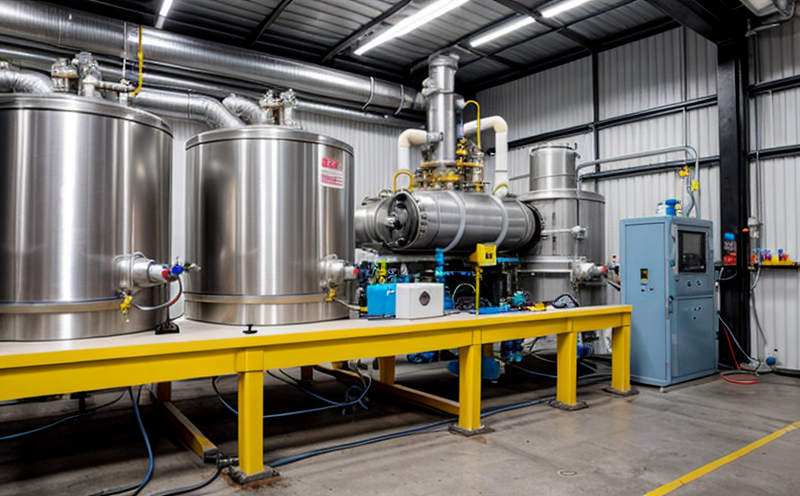ISO 21647 Neutron Dosimetry Using Activation Monitors
The ISO 21647 standard specifies methods for neutron dosimetry using activation monitors, which are widely used in the verification of neutron fields in various industrial and research applications. This service is designed to meet the stringent requirements outlined by this international standard, ensuring accurate measurement and validation of neutron exposure levels.
Neutron dosimetry is a critical process in industries dealing with high-intensity neutron sources, such as nuclear power generation, fusion reactors, and advanced materials testing. The use of activation monitors allows for precise quantification of the absorbed dose of neutrons by a material. This service focuses on the application of this standard to ensure compliance and quality assurance.
The process involves placing a suitable material in the neutron field under test conditions. Over time, the material captures some neutrons, which induce nuclear reactions leading to the production of radioactive isotopes within it. The concentration of these isotopes can be measured using gamma spectrometry techniques, providing a direct measure of the absorbed neutron fluence.
The choice of activation monitor depends on the specific requirements of the application. Common materials used include silicon carbide, boron carbide, and lithium fluoride. Each material has unique properties that make it suitable for different types of neutron fields and dosimetry objectives. The selection process is crucial as it directly impacts the accuracy and reliability of the measurement.
The testing procedure follows a structured approach to ensure consistency and repeatability. Initial steps include preparing the test specimen according to the ISO 21647 guidelines, which specify the type and amount of material required for accurate dosimetry. Once prepared, the specimen is exposed to the neutron field under controlled conditions.
Following exposure, the specimens are removed from the neutron field and transported to a dedicated laboratory facility equipped with gamma spectrometers capable of detecting the induced radioactivity accurately. The spectral data obtained from these measurements are analyzed using specialized software that calculates the absorbed dose based on known cross-sections for each detected isotope.
The results generated by this process provide valuable insights into the neutron field characteristics, helping to optimize reactor designs or material selection in various applications. This service also offers comprehensive reporting tailored to meet client needs, including detailed descriptions of the testing procedures followed, raw data from gamma spectrometry analyses, and calculated absorbed doses.
By adhering strictly to ISO 21647, this service ensures high levels of accuracy and reliability in neutron dosimetry. This is particularly important for industries where precise control over neutron exposure can significantly impact product quality or safety. Clients benefit from having robust evidence supporting their compliance with international standards, enhancing confidence among stakeholders.
In summary, ISO 21647 neutron dosimetry using activation monitors provides a reliable method for measuring and validating neutron exposures in various industrial settings. It plays an essential role in ensuring safe and efficient operation of complex systems involving high-intensity neutron sources.
Benefits
Implementing ISO 21647 neutron dosimetry using activation monitors offers several key advantages:
- Enhanced Accuracy: The use of international standards ensures consistent and reliable results, reducing variability in measurements.
- Compliance Assurance: Meeting specific requirements helps companies comply with regulatory bodies and internal quality policies more effectively.
- Informed Decision-Making: Precise dosimetry data supports informed decisions regarding reactor design or material selection.
- Increased Safety: Reliable neutron exposure measurements contribute to safer operations by identifying potential risks early on.
Why Choose This Test
Selecting ISO 21647 neutron dosimetry using activation monitors is advantageous for several reasons, particularly in sectors requiring precise and accurate neutron field characterization:
- International Recognition: Adherence to this international standard ensures that results are widely accepted across different regions.
- Precision: The method provides highly accurate dosimetry data critical for applications like nuclear reactor design and material testing.
- Rigorous Methodology: Following strict protocols enhances the credibility of the results, making them more trustworthy in regulatory contexts.
International Acceptance and Recognition
The ISO 21647 standard has gained significant traction globally due to its rigorous methodology and wide applicability. Many countries have adopted this standard as a benchmark for neutron dosimetry, recognizing the importance of accurate measurement techniques in various fields.
In nuclear power generation facilities, compliance with these standards ensures that operators can accurately monitor and control neutron flux levels within reactors. This contributes significantly to operational safety and efficiency while meeting regulatory requirements set forth by organizations such as the International Atomic Energy Agency (IAEA).
For research institutions involved in advanced materials development, precise neutron dosimetry is crucial for understanding how different materials behave under neutron exposure conditions. Such information can guide further improvements or innovations in material science.
The acceptance of results generated from ISO 21647 tests extends beyond individual organizations; they are often recognized by international regulatory bodies and industry consortia, further enhancing their credibility worldwide.





